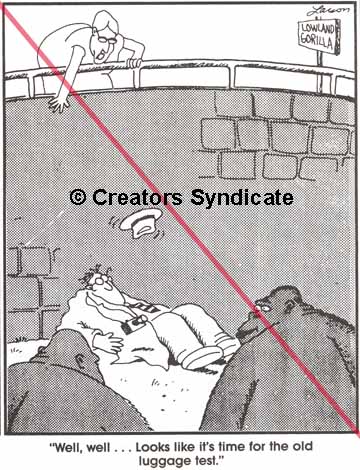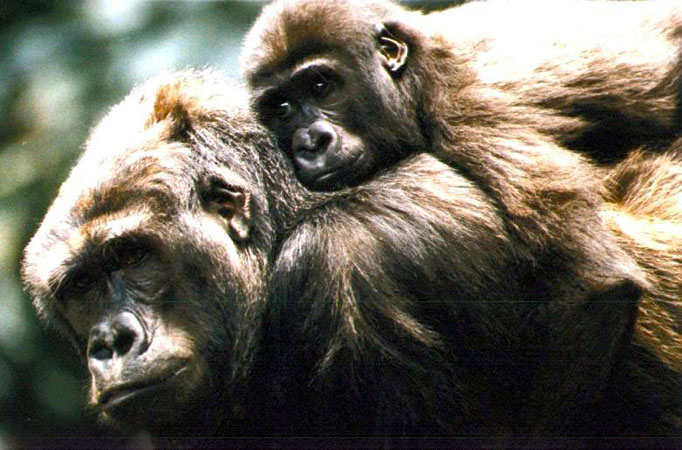 |
The EVOLUTION of MORALITY |
FRAME 16A |
 |
|
 |
> MORAL MOTIVATION OR INTENT (NEUROPHYSIOLOGY AND PSYCHOLOGY)
Non-human organisms exhibit sympathetic concern for both kin and non-related individuals.
 The first significant question in investigating the evolution of moral motives is whether other species, especially those closely related to humans, also express such motives. Many relevant cases are documented. Some of the most striking examples come from unexpected observations, rather than formal scientific study.
The first significant question in investigating the evolution of moral motives is whether other species, especially those closely related to humans, also express such motives. Many relevant cases are documented. Some of the most striking examples come from unexpected observations, rather than formal scientific study.
 For example, in 1996, Binti Jua, a female gorilla at the Brookfield Zoo outside Chicago, rescued a three-year-old child that had fallen into her enclosure. Binti Jua cradled the unconscious boy, just as she did her own child, growled at another gorilla who approached her, and then carried the boy about 20 meters to a door where the zookeeper could retrieve the boy, all while her own daughter clung to her back (Bils and Singer 1996; "Gorilla at an Illinois Zoo..."). The incident echoed a similar case at England's Jersey Zoo in 1986 with a male gorilla named Jambo. While one might want to dismiss these cases as mere stories, primatologist Frans de Waal (1996b, 2005) defends their significance in the context of similar, more systematic observations of sympathy among primates in captivity and in the wild. (Both episodes were recorded on home video.)
For example, in 1996, Binti Jua, a female gorilla at the Brookfield Zoo outside Chicago, rescued a three-year-old child that had fallen into her enclosure. Binti Jua cradled the unconscious boy, just as she did her own child, growled at another gorilla who approached her, and then carried the boy about 20 meters to a door where the zookeeper could retrieve the boy, all while her own daughter clung to her back (Bils and Singer 1996; "Gorilla at an Illinois Zoo..."). The incident echoed a similar case at England's Jersey Zoo in 1986 with a male gorilla named Jambo. While one might want to dismiss these cases as mere stories, primatologist Frans de Waal (1996b, 2005) defends their significance in the context of similar, more systematic observations of sympathy among primates in captivity and in the wild. (Both episodes were recorded on home video.)
|

 |
|
|